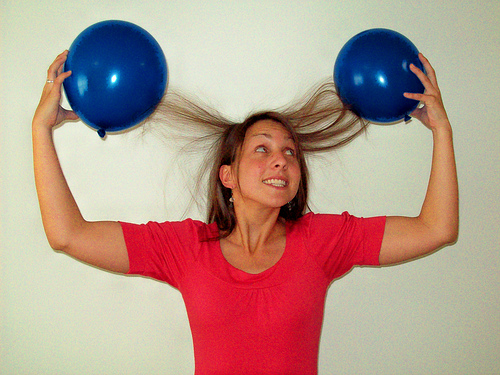Middle School
Physical Science
CH 20 WS for Electricity, I and II
1.
What is static electricity? Electrons that have moved from one object to another, but do not keep flowing.
2.
What is electric current? Electrons that flow through a wire or other medium.
3.
When an electric current is flowing through a
wire… what is FLOWING? electrons
4.
How does an object become charged? When electrons move from one object to another and stay there, the object becomes negatively charged and the object they left becomes positively charged.
5.
Draw a picture of an electric field effecting
something:
6.
What are 3 ways that charge (electrons) can be
transferred? friction (rubbing), induction (through the air) and conduction (touching)
7.
Explain how lightning and electrons are related? the water droplets in the cloud rub together and the electrons move from one droplet to another. The cloud has more electrons on one side of it (negative) and less on the other (positive). The clouds wants to be balanced again and the negative side seeks out a positive area. The electrons jump from the negative part of the cloud to the positive area. This can be on the same cloud, on another cloud or on the ground.
8.
What is the word used to describe the number of
electrons that flow past a certain point per second? amps
9.
What is the word that describes the difference
in the electric charge from one side of a battery to the other? volts
10.
Name 2 conductors: silver, copper, aluminum and iron
11.
Name 2 insulators: glass, plastic, wood
12.
If a material holds its electrons tightly, is it
a conductor or an insulator? insulator
13.
If you need to slow down the flow of electrons
there are 4 ways to increase resistance.
What are they?
- lengthen the wire the electrons are flowing through
- increase the diameter (width) of the wire the electrons are flowing through
- increase the temperature
- use a material that holds more tightly to its electrons (less conductive material)
14.
Draw a circuit that includes 3 wires, a light, a battery and a dimmer
device.

No comments:
Post a Comment
Thank you for commenting on our science class blog :)
Mrs. Tiday